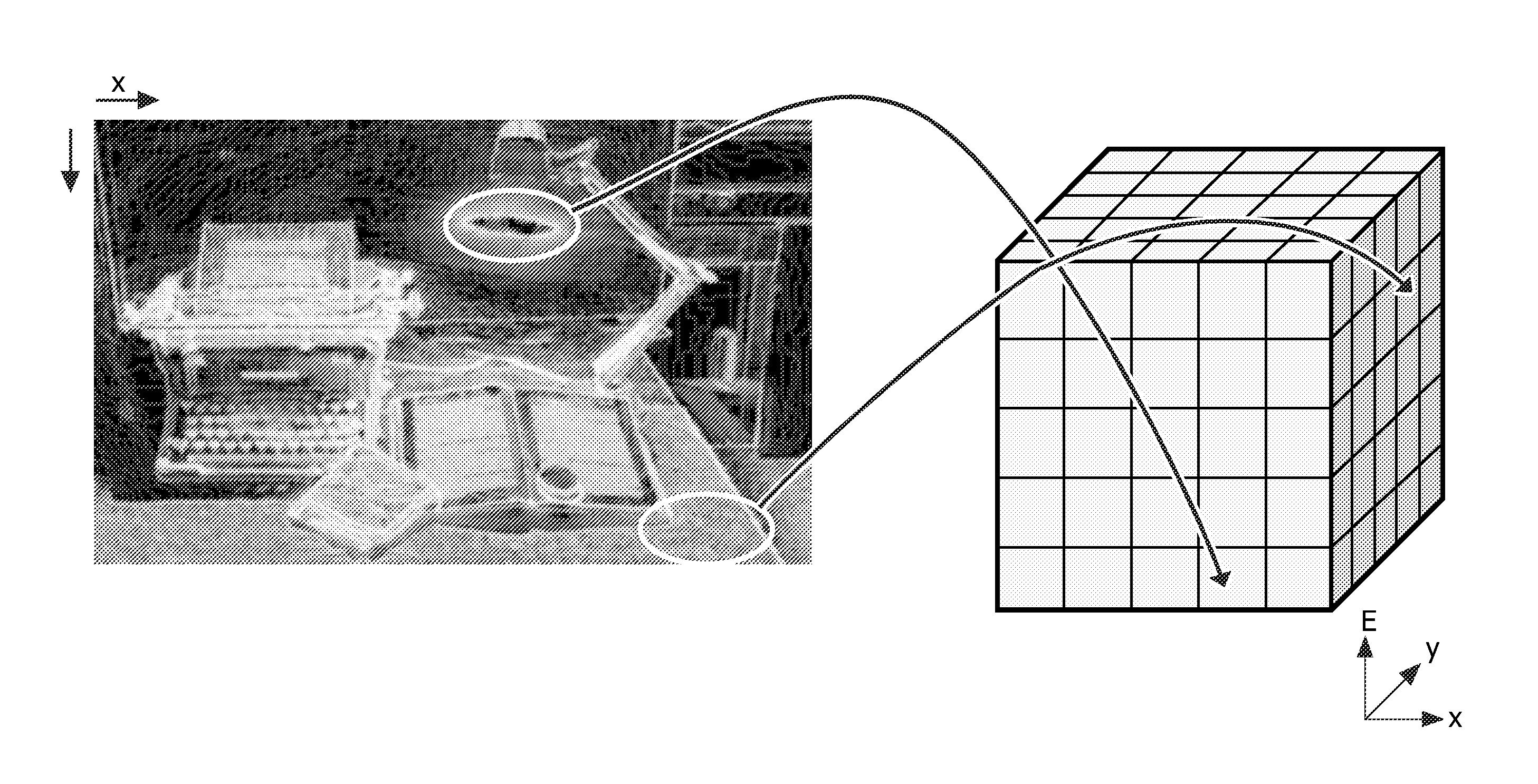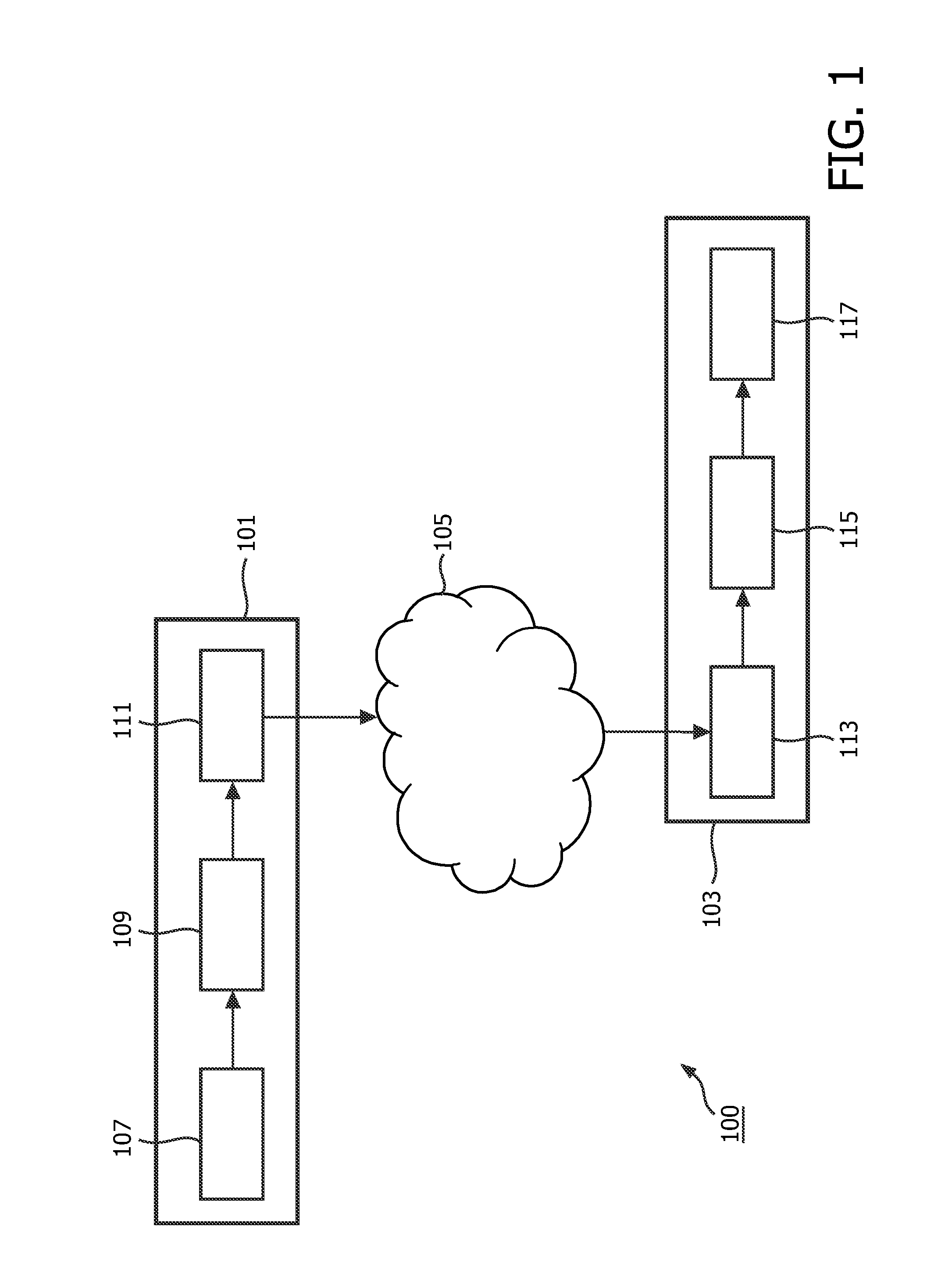Generation of depth indication maps
a technology of depth indication and depth indication, applied in the field of depth indication maps, can solve the problems of difficult to achieve the ever respectful use of difficult to achieve the effect of using fixed images for the left and right, and inability to accurately predict the depth of different objects, etc., to achieve the effect of efficient encoding, efficient encoding, and high efficiency prediction of depth indication maps
- Summary
- Abstract
- Description
- Claims
- Application Information
AI Technical Summary
Benefits of technology
Problems solved by technology
Method used
Image
Examples
Embodiment Construction
[0087]The following description focuses on embodiments of the invention applicable to encoding and decoding of corresponding images and depth indication maps of video sequences. However, it will be appreciated that the invention is not limited to this application and that the described principles may be applied in many other scenarios. In particular, the principles are not limited to generation of depth indication maps in connection with encoding or decoding.
[0088]FIG. 1 illustrates a transmission system 100 for communication of a video signal in accordance with some embodiments of the invention. The transmission system 100 comprises a transmitter 101 which is coupled to a receiver 103 through a network 105 which specifically may be the Internet or e.g. a broadcast system such as a digital television broadcast system.
[0089]In the specific example, the receiver 103 is a signal player device but it will be appreciated that in other embodiments the receiver may be used in other applica...
PUM
 Login to View More
Login to View More Abstract
Description
Claims
Application Information
 Login to View More
Login to View More - R&D
- Intellectual Property
- Life Sciences
- Materials
- Tech Scout
- Unparalleled Data Quality
- Higher Quality Content
- 60% Fewer Hallucinations
Browse by: Latest US Patents, China's latest patents, Technical Efficacy Thesaurus, Application Domain, Technology Topic, Popular Technical Reports.
© 2025 PatSnap. All rights reserved.Legal|Privacy policy|Modern Slavery Act Transparency Statement|Sitemap|About US| Contact US: help@patsnap.com



